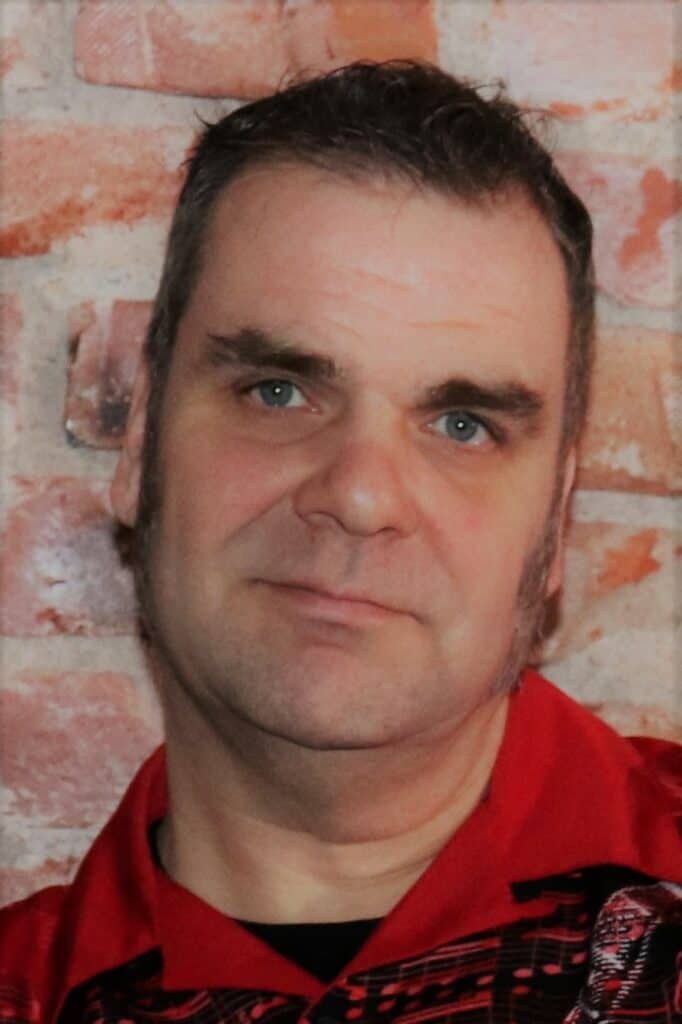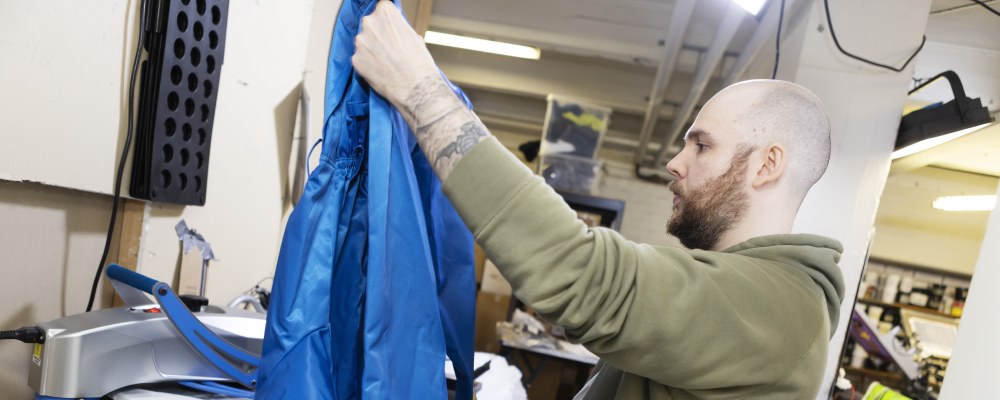
Students order their overalls as group orders. They choose the colour and the additional features of their overalls, list the order quantities by size and decide which logos they want printed on the overalls.
Silkkipaino Tam-Folio, for example, offers a choice of 20–30 colours depending on the availability of fabric. Opiskelijahaalarit.fi has a selection of 25 standard colours, but custom colours are also available to order.
Additional features for an extra charge include different-coloured pockets or sleeves, decorative stripes, a hood, shoulder loops, various extra pockets and elastic sleeve cuffs and trouser legs.
“You can essentially modify the overalls any way you want,” says Jussi Leppänen from Tam-Folio.
“Your imagination and your budget are the only limits,” says Tommi Kivistö, the owner of Opiskelijahaalarit.fi.
According to Kivistö, student associations do not change the colour of their overalls, but new colours are added as new associations are born. Kivistö mentions sky-blue as an example of a new colour.
(The article continues after the image.)
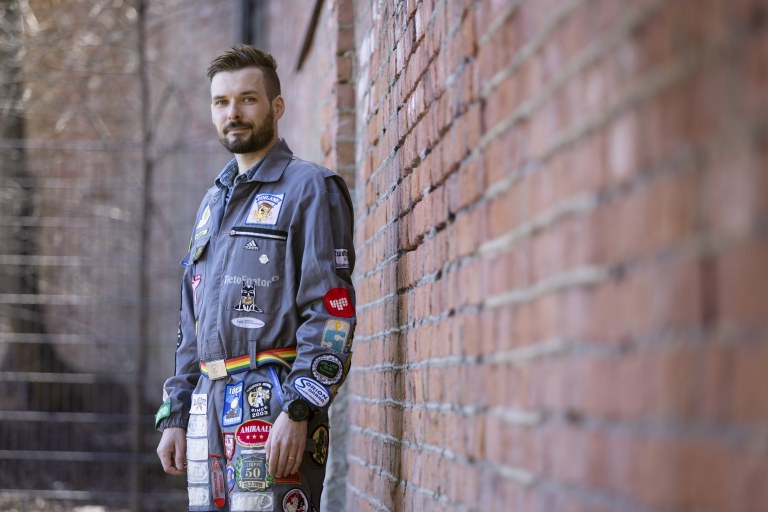
The customer confirms the order after creating a model image of the overalls. Once the model image is ready, the company can start planning the production – when the fabric will be cut, when the printing will be done on the pieces of fabric and when they will be sewn together. Tam-Folio’s fabrics are purchased by a sewing shop, while Opiskelijahaalarit.fi purchases the fabrics itself.
“When I buy fabric at the beginning of the year, the quantities are something like one hundred kilometres of fabric. Before COVID, I placed orders with an importer, but now I order the fabrics directly from the factory,” says Kivistö.
The fabrics for student overalls mainly come from China for cost reasons. The material is enstex-type cotton-polyester blend. In custom colours, such as olive green, the fabric comes from Europe. Customers want to save money and rarely choose European fabrics.
“This is a supply and demand issue. There are not as many ecological or recycled fabrics out there that can be used for overalls, compared to tricot and college fabrics, for example. Student overalls are a marginal product for fabric factories,” says Kivistö.
Kivistö argues that the demand for eco-fabrics should be driven by the workwear market to ensure that the demand is high enough to start affecting the supply and the price of these fabrics. He believes that in the future student overalls can also be mostly made from wood-based textile fibres, but it will be years before that happens.
Orders are sent from Tam-Folio to a sewing shop in Tartu, Estonia. Opiskelijahaalarit.fi sends its orders to a sewing shop in Poland where the overalls are also printed. And then we wait.
Once the sewn overalls arrive at Tam-Folio in Tampere, Leppänen and the co-owner of the company Tomi Gullstén take care of the printing of the overalls and their delivery to the end customers, the students.
(The article continues after the image.)
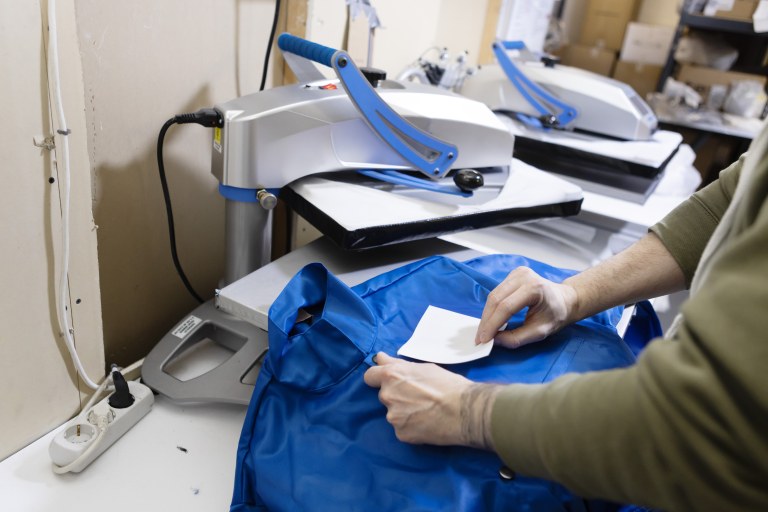
Kivistö does not see the finished overalls until they are worn by students out on the street, because the finished product goes directly to the customer.
Peak season from September to Shrovetide
Last May Day marked the 10th anniversary of Tommi Kivistö establishing Opiskelijahaalarit.fi in Tampere. The company now sells more than 25,000 overalls a year. Kivistö estimates that this is more than half of all the student overalls in Finland.
Jussi Leppänen and Tomi Gullstén, the owners of Silkkipaino Tam-Folio, estimate that they sell roughly 2,000 – 3,000 student overalls in a year. The company is now 30 years old, and has been run by Leppänen and Gullstén for about ten years. Unlike Opiskelijahaalarit.fi, Tam-Folio’s main business is not student overalls, but textile sales and various textile markings.
“We produce everything from workwear to traditional promotional textiles to printed design. In addition to overalls, we also make custom shirts for student organizations and faculties,” says Gullstén.
Kivistö runs the company single-handedly from home. Sewing the overalls employs about one hundred people in Poland in the peak season. The busiest season lasts from September to Shrovetide (laskiainen in Finnish).
Tam-Folio has premises near the city centre in Tampere. The company’s overalls are sewn in Tartu, but otherwise the business is run in Finland. Gullstén and Leppänen print all the logos and advertisements themselves and hire someone they know to help them in the peak season.
“At first, we had a subcontractor print the advertisements on the overalls, but we decided to give that up once we had more customers of our own,” say the duo running Tam-Folio.
(The article continues after the image.)
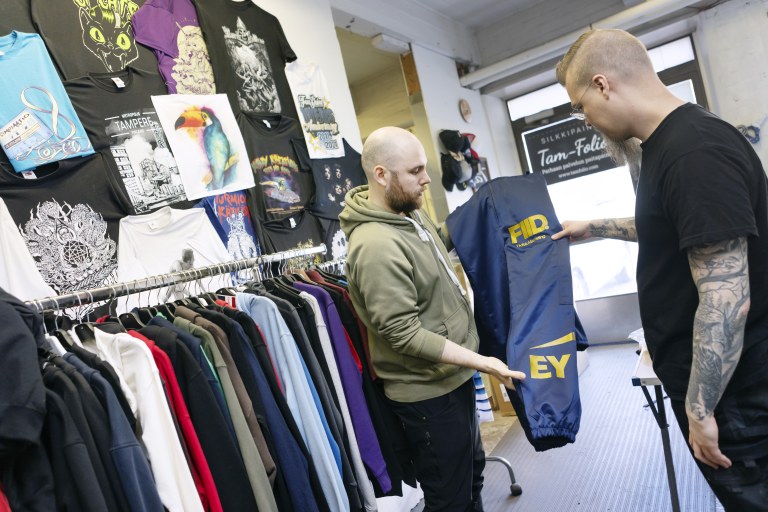
According to the estimate of Visiiri, the publication of the Student Union of Tampere University (TREY), there are currently about ten suppliers of overalls in Finland.
“The number of serious suppliers in the student overalls business is dwindling. It’s becoming harder and harder to obtain fabric, production and sewers,” says Kivistö.
Missing out on the 20th year of overalls
Vilho Myllykangas ran Haalarikauppa Myllykangas for 19 years before calling it quits. He now provides consultation for HVAC construction through his company Nordic Bright and runs the record company Millmoor Records & Productions in Tampere.
“Selling overalls was a fun and versatile job! I enjoyed working with students,” he recalls.
Vilho Myllykangas managed everything in his overalls business from sales to placing orders, buying fabric and freight. He ordered fabrics from Finlayson, but also from abroad, such as from Pakistan and The Netherlands. Sometimes he would prepare the print material for the printing company on behalf of the customer.
“I wanted to make it as easy as possible for students to order overalls, because they have plenty of other things to do.”
Myllykangas stopped selling overalls in 2018. He explains that the reason for this was the delivery problems of his partners at the time.
“Plus, I couldn’t find a sewing shop that would meet my requirements for delivery reliability and sewing quality.”
Vilho Myllykangas does not own a pair of overalls himself, but speaking from his 19 years of experience in overalls, he has a piece of advice to share:
“A pair of overalls that’s too big will bother you less than a pair that’s too small. You can easily fit other clothes underneath a big pair of overalls.”
